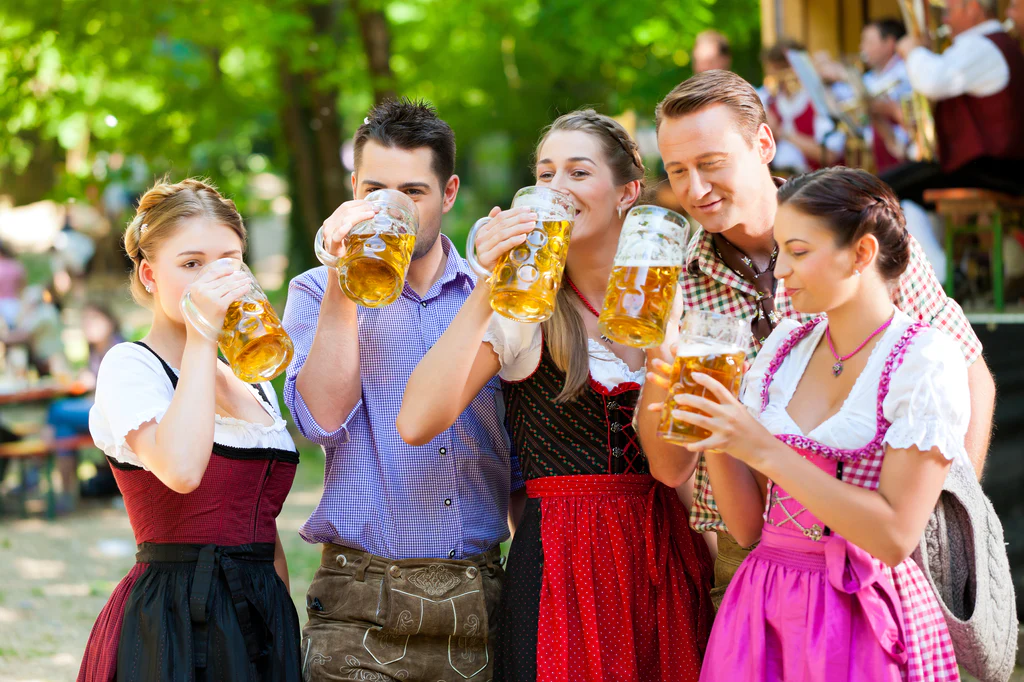How to Choose a Lederhosen Costume to Style in Traditional German Attire, Lederhosen, the quintessential traditional German attire, carries a rich cultural heritage that dates back to the 18th century. These leather breeches are more than just a costume; they symbolize Bavarian culture, tradition, and craftsmanship.
Whether you are preparing for Oktoberfest, a themed party, or simply want to embrace a piece of German culture, choosing the right lederhosen is essential. This comprehensive guide will walk you through the process, helping you make an informed decision and ensuring you look authentic and stylish.
Understanding the Basics of Lederhosen
Before diving into the selection process, it’s important to understand what lederhosen are and their cultural significance. Lederhosen, which translates to “leather trousers,” are knee-length or short pants made of leather. Traditionally, they are worn with a checkered or plain shirt, long socks, and sturdy shoes. Accessories such as suspenders (Hosensträger) and a traditional hat (Tirolerhut) complete the look.
Table 1: Components of Traditional Lederhosen Outfit
| Component | Description |
|---|---|
| Lederhosen | Leather trousers, either knee-length or shorter |
| Shirt | Checkered or plain, usually cotton or linen |
| Socks | Long, knitted socks (Loferl) |
| Shoes | Sturdy, often Haferlschuhe (traditional Bavarian shoes) |
| Suspenders | Leather braces, often with embroidery |
| Hat | Tirolerhut, often with a feather or brush decoration |
Types of Lederhosen
Lederhosen come in various styles and lengths, catering to different preferences and occasions. The main types include:
- Kniebundlederhosen: These are knee-length leather pants that provide a traditional look, often favored for formal occasions.
- Kurze Lederhosen: Shorter than the Kniebundlederhosen, these end above the knee and are popular for their comfort and casual appearance.
- Plattlerhosen: These are the shortest, typically used for folk dancing and performances.
Table 2: Comparison of Lederhosen Types
| Type | Length | Common Use | Comfort Level |
|---|---|---|---|
| Kniebundlederhosen | Knee-length | Formal events, traditional wear | High |
| Kurze Lederhosen | Above knee | Casual wear, Oktoberfest | Medium |
| Plattlerhosen | Mid-thigh | Folk dancing, performances | High |
Material and Quality
The quality of the leather is crucial when choosing lederhosen. High-quality lederhosen are made from deerskin, which is soft, durable, and comfortable. Other options include goat or cowhide, which are more affordable but may not offer the same level of comfort.
Table 3: Lederhosen Material Guide
| Material | Description | Durability | Comfort | Price Range |
|---|---|---|---|---|
| Deerskin | Soft, supple, and breathable | High | High | Expensive |
| Goatskin | Soft and relatively durable | Medium | Medium | Moderate |
| Cowhide | Durable but can be stiffer | High | Low | Affordable |
Fit and Sizing
Proper fit is essential for comfort and authenticity. Lederhosen should fit snugly but not restrict movement. Over time, leather will stretch and conform to your body shape. When trying on lederhosen, make sure you can move comfortably and that the waistline sits naturally.
Table 4: Lederhosen Sizing Tips
| Fit Aspect | Ideal Fit Description |
|---|---|
| Waist | Snug but not tight, sits comfortably without squeezing |
| Length | Falls just above or at the knee for knee-length styles |
| Thighs | Should allow movement without excessive looseness or tightness |
| Suspenders | Adjustable, should hold the pants up without pulling |
Style and Embellishments
Lederhosen often feature intricate embroidery, which can vary based on region and personal preference. Common motifs include floral patterns, deer, and other Bavarian symbols. Color choices also vary, with traditional colors being shades of brown and black, while modern versions may offer more variety.
Table 5: Embroidery and Style Options
| Style Element | Description |
|---|---|
| Embroidery | Typically features traditional Bavarian motifs |
| Colors | Traditional: Brown, black; Modern: Various including green, blue |
| Accessories | Buttons, buckles, and decorative stitching enhance the look |
How to Accessorize
Completing your lederhosen outfit with the right accessories is crucial for achieving an authentic look. This includes not just the basic components like shirts and socks, but also hats, belts, and even traditional jewelry.
Table 6: Essential Lederhosen Accessories
| Accessory | Description | Importance |
|---|---|---|
| Shirt | Typically checkered or plain, made of cotton or linen | High |
| Socks (Loferl) | Long, knitted socks often with decorative elements | High |
| Shoes (Haferlschuhe) | Sturdy leather shoes, essential for the traditional look | High |
| Hat (Tirolerhut) | Felt hat, often adorned with a feather or brush | Medium |
| Belt | Sometimes worn instead of suspenders, usually leather | Optional |
| Jewelry | Traditional pieces like edelweiss pins or stag horn buttons | Optional |
Conclusion
Choosing the right lederhosen involves understanding the various styles, materials, and accessories that contribute to this traditional German attire. Whether for a cultural event, a festive celebration, or simply to appreciate Bavarian heritage, selecting high-quality lederhosen ensures comfort, authenticity, and style. Remember to consider the fit, material, and embellishments to make your lederhosen uniquely yours.
By following this guide, you’ll be well-prepared to don your lederhosen with confidence and pride, honoring the rich traditions they represent while showcasing your personal style. Prost!
This guide provides a detailed overview to help you choose the perfect lederhosen, with tables summarizing key aspects for easy reference. Enjoy your journey into the world of traditional German attire!

